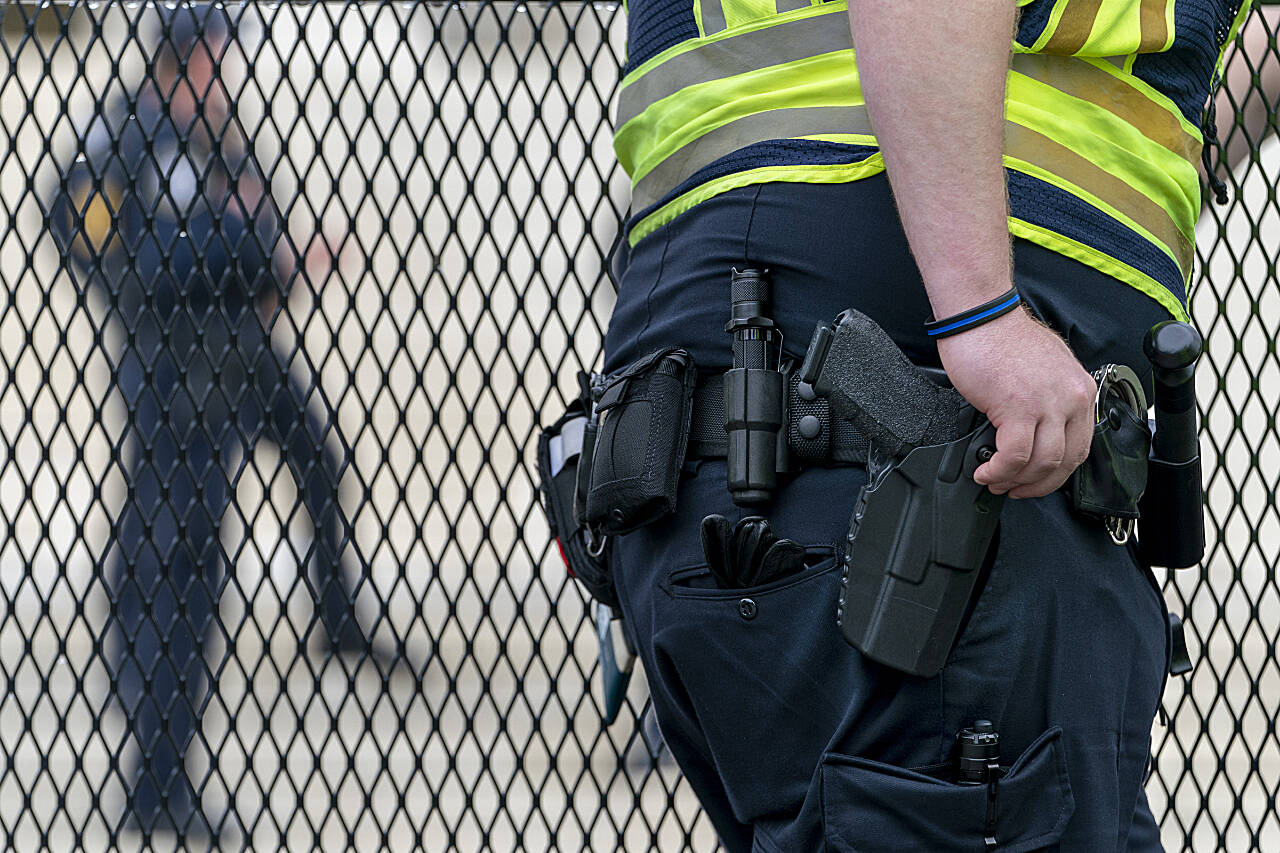“Like most rights, the right secured by the Second Amendment right is not unlimited…. [It is] not a right to keep and carry any weapon whatsoever in any manner whatsoever and for whatever purpose.”
— U.S. Supreme Court Justice Antonin Scalia, in District of Columbia v. Heller
By The Herald Editorial Board
Supporters of effective and reasonable restrictions on firearms should savor the victory in the U.S. Senate’s modest but necessary package of legislation adopted Thursday; coupled with the House’s concurrence Friday, it could be the last such win in Congress they will see for years.
That’s not solely because — following 29 years of inaction since bipartisan passage of the Brady Bill in Congress — it took a month of sustained public outcry following back-to-back massacres of innocents in Buffalo, N.Y., and Uvalde, Texas, along with the devastating white noise of daily gun violence, to move enough Republicans in the Senate to side with Democrats to adopt the Bipartisan Safer Communities Act.
It’s also because hopes for future legislation — not just at the federal level but the state level as well — have now been complicated by Thursday’s other news: the U.S. Supreme Court’s decision overturning a New York state law that permitted concealed weapons permits only to those who could show a special need to carry firearms other than to a shooting range or hunting grounds. Along with New York, similar laws in five other states are now at risk.
The New York law had not been unreasonably applied; a review of records in 2018 and 2019 showed 65 percent of applications for such licenses had been granted by the state.
Writing for the 6-3 majority, Justice Clarence Thomas broadened the right to keep and bear arms beyond the court’s 2008 Heller ruling, which affirmed the right to keep firearms in the home for self-defense, expanding it to public areas outside the home.
“We know of no other constitutional right that an individual may exercise only after demonstrating to government officers some special need,” Thomas wrote.
Yet, no other right carries with it a higher likelihood of deadly consequences when abused.
Legal experts criticized the ruling for justifications that relied on a selective reading of the country’s firearms history and culture but also for creating more uncertainty about just what restrictions would be considered constitutional.
Among the critics was Michael Waldman, president of the Brennan Center for Justice and co-author of a book on the Second Amendment. Noting that the Supreme Court’s guidance on gun legislation has been largely absent since the Heller ruling, Waldman writes in a Washington Post commentary that state courts on up to federal appellate courts have shouldered the responsibility for developing case law regarding firearms and their restrictions and have found that gun rights can be constitutionally limited over concerns for public safety.
Until now, emboldened by a new 6-3 conservative majority, the court had seen no reason to reconsider lower court rulings.
“The ruling Thursday,” Waldman writes, “says that all these judges got it wrong. Instead, the majority said, courts must assess gun rules especially focusing solely on ‘history and tradition.’ Don’t look at public safety; search for analogies to past laws from a very different time.”
We await word from the Constitution’s Framers regarding the “history and tradition” of semi-automatic AR-15s and 30-round ammo clips.
The result, Waldman said, means that opponents of gun legislation can now challenge current and proposed legislation on the basis of “history and tradition,” instead of public safety.
As well, J. Michael Luttig, a former federal appellate judge and once on President George H. W. Bush’s short list for the Supreme Court, noted in an amicus brief supporting the New York law the history that Thomas and the majority selectively ignored.
“The majority of the 19th-century courts to consider the question held that prohibitions on carrying concealed weapons were lawful under the Second Amendment or state analogues,” Luttig wrote.
Instead of restrictions on persons, the court majority appears to accept restrictions tied to “sensitive places,” with Thomas writing that it was uncontroversial to prohibit firearms at schools, government buildings, courthouses and polling places. But Justice Stephen Breyer in his dissent said that the majority opinion provides little detailed guidance on what qualifies as a “sensitive place” beyond those examples.
“What about subways, nightclubs, movie theaters, and sports stadiums? The Court does not say,” Breyer wrote.
What will be allowed is left for lawmakers at all levels to take a shot at and wait for courts to judge their aim.
What will the high court’s majority make of the Bipartisan Safer Communities Act, which includes reasonable — but perhaps not so to Thomas & Co. — firearms restrictions and investments in safety?
Along with funding for mental health and school security improvements, the legislation, while not raising the age to purchase semi-automatic rifles to 21 from 18, does expand criminal background checks to include a search of juvenile criminal and mental health records of those 20 and younger and allows for 10 days for authorities to review those records, up from three days. It also closes the “boyfriend loophole” that bars purchase of firearms to domestic-violence offenders and provides funding for states to implement “red flag” laws that allow for temporary confiscation of firearms for those deemed a threat to themselves or others.
With public safety now absent as a consideration, how will history and tradition be applied to those provisions?
If Washington state passes legislation that bars the sale of semi-automatic “assault” rifles or requires gun owners to obtain liability insurance just as motorists are required to do for their vehicles, what history and tradition applies in those instances?
We can only hope the court majority has a direct line to the Framers; and to Justice Scalia for good measure.
Talk to us
> Give us your news tips.
> Send us a letter to the editor.
> More Herald contact information.

























